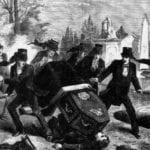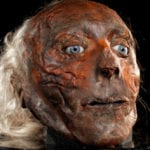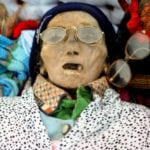 History
History  History
History  Weird Stuff
Weird Stuff 10 Everyday Products Surprisingly Made by Inmates
 Movies and TV
Movies and TV 10 Actors Dragged out of Retirement for One Key Role
 Creepy
Creepy 10 Lesser-Known Shapeshifter Legends from Around the World
 Animals
Animals 10 Amazing Animal Tales from the Ancient World
 Gaming
Gaming 10 Game Characters Everyone Hated Playing
 Books
Books 10 Famous Writers Who Were Hypocritical
 Humans
Humans 10 of the World’s Toughest Puzzles Solved in Record Time
 Mysteries
Mysteries 10 Scientific Mysteries We Don’t Fully Understand
 Weird Stuff
Weird Stuff 10 Celebrities Who Have Admitted to Alien Encounters
 History
History Ten Revealing Facts about Daily Domestic Life in the Old West
 Weird Stuff
Weird Stuff 10 Everyday Products Surprisingly Made by Inmates
 Movies and TV
Movies and TV 10 Actors Dragged out of Retirement for One Key Role
Who's Behind Listverse?

Jamie Frater
Head Editor
Jamie founded Listverse due to an insatiable desire to share fascinating, obscure, and bizarre facts. He has been a guest speaker on numerous national radio and television stations and is a five time published author.
More About Us Creepy
Creepy 10 Lesser-Known Shapeshifter Legends from Around the World
 Animals
Animals 10 Amazing Animal Tales from the Ancient World
 Gaming
Gaming 10 Game Characters Everyone Hated Playing
 Books
Books 10 Famous Writers Who Were Hypocritical
 Humans
Humans 10 of the World’s Toughest Puzzles Solved in Record Time
 Mysteries
Mysteries 10 Scientific Mysteries We Don’t Fully Understand
 Weird Stuff
Weird Stuff 10 Celebrities Who Have Admitted to Alien Encounters
10 Lion Tamers From History Who Flirted With Death
The term “lion tamer” refers to an individual who tames and displays any large wild cat for an audience, especially at the circus. Although their jobs were dangerous, the people featured here took control of wild cats and made them do incredible things.
10 Isaac van Amburgh
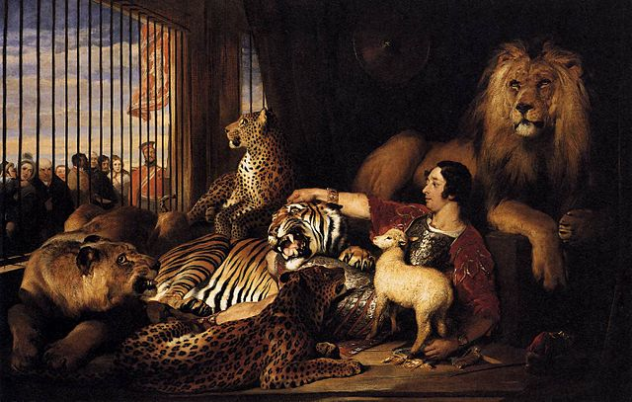
Considered to be the most popular and influential lion tamer of his time, Isaac van Amburgh was born in 1811 to American parents of Dutch descent. He began his career as a cage cleaner at the Zoological Institute of New York when he was 19. Isaac soon became prominent and caught the attention of important figures, such as Queen Victoria and the duke of Wellington. The queen became a fan of Isaac’s shows. She reportedly attended his London shows seven times in six weeks and occasionally stayed behind to watch him feed his cats.
The queen commissioned Sir Edwin Henry Landseer, a famous English painter, to paint a portrait (pictured above) of van Amburgh among his animals during one of his performances in London. The portrait was exhibited at the Royal Academy of Arts. Van Amburgh performed his acts by entering the cage dressed in a Roman gladiator costume. He would proceed to provoke as much ferocity as he could from the lions and tigers before combating and ultimately conquering them into submission with a crowbar.
Van Amburgh performed death-defying stunts such as smearing his hand with blood and placing it in the mouth of a lion, and he was the first man to have rested his head in a lion’s jaw. He was once asked by the duke of Wellington if he felt any fear when around the wild cats. Van Amburgh replied that the day he realized that he was afraid or that his “pupils” are no longer afraid of him, he would retire. On November 29, 1865, van Amburgh died of a heart attack at age 54 at his home in Philadelphia.
9 Irina Bugrimova
Irina Bugrimova was born in the Ukraine on March 13, 1910. She was a ballet dancer and skating champion. She joined the circus as a teenager, starting out as an acrobat and motorcyclist. She soon became bored with that and began performing lion-taming acts with the use of her motorcycle. In one of her early performances, she had a lion run in front of her motorcycle as if in fear, while another jumped onto the back of her seat to ride along.
Aside from being the first female lion tamer in the Soviet Union, Bugrimova was an innovator who invented “the lion swing.” Irina would swing on it with a lion, and after a while, they both would fall off the swing, at which point she would feed the lion a piece of meat with her mouth. In her four decades of working in the circus, she trained about 70 lions. She also trained tigers and even a liger. Among the wild cats that she tamed, her favorite was Caesar, a lion that she worked with for 23 years. Caesar developed great affection for Bugrimova and once saved her life from an aggressive lion.
Bugrimova’s glittering career came to an abrupt end when she was attacked by a lion called Nero during a show in 1971. Although her leg was severely injured, she managed to finish the show. In all her years as a lion trainer, Irina claimed to have never hit any of the animals in anger in spite of numerous attempts to maim her. At the end of her career, she became one of the prominent leaders of Russia’s animal protection society.
8 Gunther Gebel-Williams
Gunther Gebel was born on September 12, 1934, in Germany. He first came in contact with the circus at the age of 13 when his mother got a sewing job with the Circus Williams and took him along to work as an usher. She disappeared soon afterward, leaving Gebel to be cared for by the circus. He added “Williams” to his last name in honor of Harry Williams, the circus owner who took care of him.
While working at the circus, Gebel taught himself animal training and began performing soon afterward. He moved to the United States in 1968 when Irvin Feld, owner of Ringling Brothers, bought out Circus Williams just to get him to perform for American audiences. Gebel’s acts enthralled the audience so much that he performed more than 12,000 times (1,191 at the Madison Square Garden alone) in the US.
Gebel’s acts included training lions to ride on the back of frightened horses, elephants to walk calmly through traffic, and leopards to jump through flaming hoops. Gebel, who considered himself a trainer rather than a tamer, simply choose to communicate with animals using his voice and giving them pieces of meats to encourage them when they please him. Like most trainers, he was frequently attacked by his animals. His face was covered with so many scars that he sometimes found it difficult to speak in cold weather.
Gebel’s favorite cat was a 34-kilogram (75 lb) panther named Kenny. After Kenny’s death, Gebel tried befriending a 68-kilogram (150 lb) panther named Zorro. Zorro became upset and attacked Gunther, biting him in the neck, an injury which required hospitalization. He said that in his five decades as an animal trainer, house cats were the most difficult animals to train because they tend to do as they please.
7 Bill Stephens
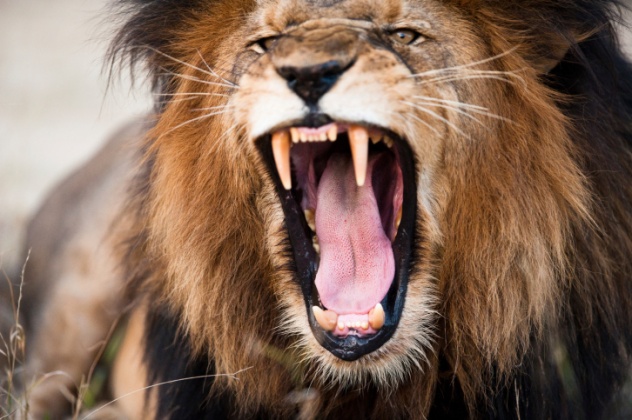
Originally a welder from a poor background, Bill Stephens dreamed of becoming a world-famous lion tamer. When he was in his early twenties, Stephens managed to acquire three lions and began touring with some of Ireland’s biggest circus families. He and his wife toured as the Jungle Capers. Stephens performed famous dangerous acts with his lions, which included feeding them from his own mouth and placing his head between their jaws.
The fame that Stephens craved all his life came to him in an unlikely way. One regular November afternoon in 1951, a lioness owned by Stephens escaped from her pen and ran into the quiet streets of Dublin. The lioness terrified people on the streets and almost mauled a young petroleum attendant before Stephens wrestled the lioness off him. Stephens pleaded with the police not to kill the lioness as he tried to coax her into the cage. The lioness turned on him, forcing the police to kill her. Defying death, Stephens left the scene with only a wounded shoulder.
Newspapers and magazines told tales (some fictitious) about Stephens’s exploits, and he became an international sensation. However, Stephens felt that he needed to build a bigger reputation to attract big American circuses. His acts soon became more dangerous. He acquired a notorious lion named Pasha from the Dublin Zoo. Stephens decided that nothing would entertain the audience more than to see him in a cage with the truly dangerous beast. He decided to do so when an American circus scout was to visit his show. Unfortunately, Pasha didn’t recognize Stephens’s scent because he wore a new suit. The lion attacked and killed him.
6 Yvonne Berman

Yvonne Berman was born Katherine Yvonne Yzermann in the Netherlands on August 22, 1929. As a young girl, she fell in love with a local boy named Adriaan Berman. They got married against her parents’ wishes in 1950. Soon after the marriage, Yvonne developed an interest in animal training, consequently leading to the end of her marriage. After her divorce, Yvonne enrolled at the Eric Klant Animal Training Centre in Holland.
Months later, Yvonne began working with Circus Mikkenie, the leading circus in Holland, presenting lions. She subsequently worked at the Cirque Medrano in Paris, Circus Knie in Switzerland, and for Circus Williams in Germany. She made her first appearance in Britain with Tom Arnold’s Circus in 1956.
In 1961, Berman was contacted by notable circus owner Cyril Mills to showcase his new cage. The “Mills-type cage” was a light, tightly locked, and safe enclosure that granted audiences uninterrupted view of the animals. It was used during the Bertram Mills Circus’s winter season in Olympia. The next day, newspapers ran photographs of Berman and her lions under the headline “Beauty and the Beasts.”
At the German circus of Carl Althoff, Berman amazed the audience by presenting a group of six tigers and three lions in the ring together. She performed a more extraordinary feat at the Franz Althoff Three Ring Circus, where she presented lions, tigers, leopards, black panthers, a polar bear, and a Himalayan bear all in the ring together. In 1972, she retired from the circus to become the chief cashier in the circus’s booking office. She spent the next 15 years at that post before eventually retiring to Rijswijk, the Netherlands, in 1988.
5 Angel Cristo
Angel Cristo was born into a famous circus family in 1944. His mother, Margareta Dordi, was a contortionist who was popularly called “Little Carolina,” and his father was a Greek trapeze artist named Christophol Cristo Papadopulos. Cristo grew up in his family’s circus and almost got his start as a cat tamer at the age of 17, when he stood in for an absent tamer in rehearsal. Unfortunately, the performance couldn’t take place because heavy winds blew down the circus tent.
Cristo finally got the chance to perform on his 22nd birthday. His career subsequently took off in the early 1970s, after he acquired a small circus and named it Circo Ruso. As a performer, Cristo adopted the more aggressive style of training animals. He was known to make use of a whip and shout at his cats when in the cage to intimidate them. Cristo’s acts usually involved (but were not limited to) lions walking on two parallel tightropes and cats riding on horseback. Cristo’s penchant for mistreating animals limited his chances to work outside Spain. Cristo was not above the hazards that come with being a tamer. In 1990, he was attacked by three lions and a tiger.
Although famous for his in-ring exploits, Cristo also garnered attention outside the ring. He was known to make the front page due to his drug addiction and constant bouts of depression. He was also found guilty of child labor and was heftily fined for it several times. His last performance was in 2010, when he presented three elephants for the Circo Americano-Faggioni in Madrid. He died shortly afterward of cardiac arrest on May 4, 2010, at a Madrid hospital and was laid to rest at the Cementerio de la Almudena.
4 Carl Hagenbeck
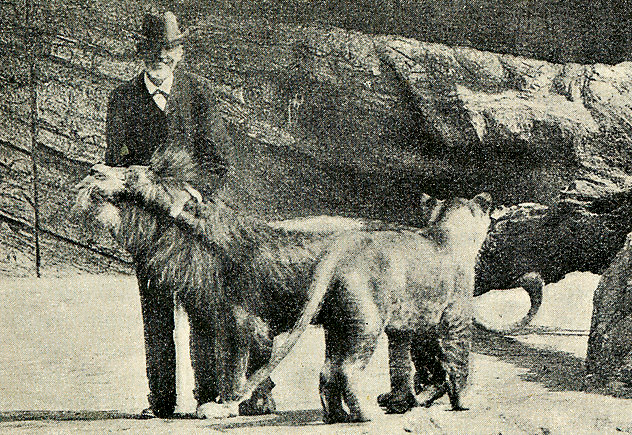
Carl Hagenbeck was born on June 10, 1844, to a fishmonger named Claus Gottfried Carl Hagenbeck. Claus was also a merchant who bought and sold exotic animals. He maintained a small zoological garden. Carl chose to follow in his father’s footsteps. At a young age, he became an exotic animal trader, selling to zoos and circuses. Carl took over his father’s animal menagerie in 1866 and became a leading dealer by the early 1870s.
As the animal trade declined, Carl embarked on the production of circus shows. He featured different people from diverse backgrounds and several animals in his shows. In 1887, Carl began to advocate for a change from inhumane treatment of animals. He demonstrated through his performances, notably in 1889 when he featured an act in which three lions pulled him around the cage in a chariot, that such treatments of animals are cruel and unnecessary. Carl stressed before his audiences that animals are intelligent, hence they can be controlled by befriending them.
Carl eventually sold his animal shows to Benjamin Wallace, who renamed them as the Hagenbeck-Wallace Circus in 1906. Carl opened a zoological garden the next year. His zoological garden became the model for future open-air zoos. He died from a boomslang snake bite in Hamburg on April 14, 1913.
3 Mabel Stark
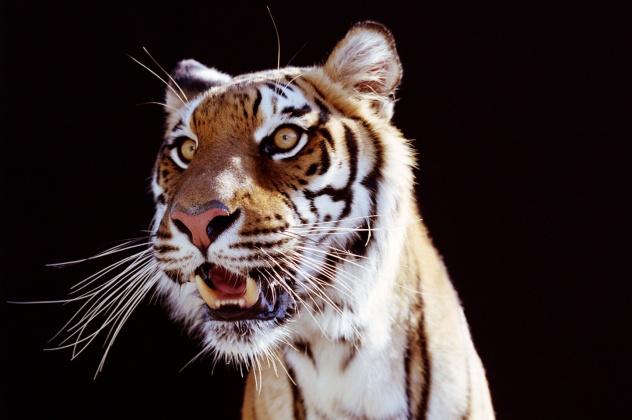
Often regarded as one of the most famous tamers to have entered the ring, the early life story of Mabel Stark, whose birth name was Mary Haynie, is shrouded in mystery. Historians believe she was born around 1889. At 17, she trained as a nurse, got a job at a hospital in Kentucky, and worked part time as a carnival dancer. When not working, Stark spent time at a menagerie supervised by Al G. Barnes.
Barnes established a circus in 1911 and invited Stark to work with him. Stark was assigned to riding horses, but she wanted to work with the tigers. She approached Louis Roth, the head animal trainer at the circus, and trained under him. Roth wanted Stark to work with lions, but she was drawn to the tigers. Stark followed Roth’s style of animal training, which preached rewarding animals as opposed to the earlier trend of beating them into submission. Stark’s first performance was with only two lions and two tigers, but as time went on she was performing with as many as 18 tigers in the ring.
Stark took a rejected tiger cub named Rajah and trained him. With Rajah, Stark developed her signature act, which catapulted her to fame. Stark would wrestle with Rajah in the ring. The audience usually believed that she was mauled by the cat until the end of the performance. Years later, Stark revealed that during the acts, Rajah was actually relieving himself sexually. She adopted her signature white uniform to prevent the audience from seeing the tiger’s semen. Stark was attacked many times by the animals she trained. At one point, she needed up to 378 stitches to sew her skin together after a brutal attack from a tiger
Stark fell into depression when she lost her job at age 79. The loss of her job and the subsequent death of one of her escaped tigers pushed Stark over the edge. She committed suicide by taking an overdose of barbiturates. In her 1938 autobiography Hold That Tiger, Stark wrote that she would prefer to die at the hands of a tiger over any other means.
2 Martini Maccomo
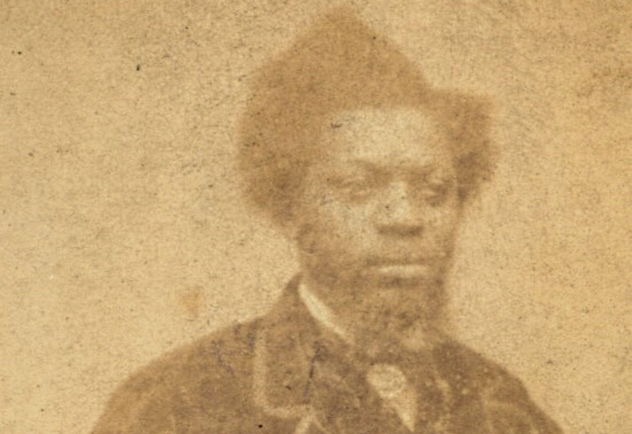
Famously referred to as the “African Lion King,” little is known about Martini Maccomo’s early life. According to some historians, he was born in Angola around 1835–36. Other historians believe that he was a Liverpool-born sailor. Martini became famous after prominent showman William Manders secured his services in the early 1850s. Manders was the first showman to bring in exotic animals for display to the British public. When he introduced Maccomo as a lion tamer, people came by the thousands to see.
Maccomo’s shows consisted of chasing up to 20 furious lions and tigers around a ring while brandishing a whip and shooting from a gun to make them angrier. He would then corner them and play with them. At the height of his fame, Martini was usually given random dangerous beasts to tame. In 1886, he was given a vicious Bengal tiger, which attacked and bit another circus tiger shortly after it arrived. Once Maccomo entered the cage, the Bengal quickly attacked him. Maccomo shot at it, but the tiger recovered quickly. It knocked Maccomo to the ground and was about to tear him to pieces before he was saved by one of his favorite circus tigers, which attacked the Bengal tiger.
Martini lived to fight another day and survived more serious animal attacks, including one from a lion named Wallace. His success as a tamer convinced many black entertainers to work as animal trainers. Martini died from rheumatic fever at a hotel in Sunderland on January 11, 1871.
1 Clyde Beatty
Clyde Beatty was born on June 10, 1903, to Margaret Beatty in Bainbridge, Ohio. He was the eldest of nine children. At age 18, Clyde fell in love with the circus and joined the Howe’s Great London and Van Amburgh’s Wild Animal Circus, where he took a job as a circus cage attendant. While there, Clyde learned the act of taming from people like Peter Taylor.
By 1923, Clyde was working with groups of wild cats, hyenas, and bears. From 1925 to 1935, Beatty worked with the Hagenbeck-Wallace Circus. Clyde’s large, mixed-species act became his signature act. He reportedly had the largest mixed-cat act in history. He once performed in a cage with as many as 40 lions and tigers. As a performer, Clyde was one of the first tamers to use a chair. He would go into the cage with a whip, a gun, and a chair. The whip and the gun were mostly for show; the chair did the work. The four legs of the chair confused and distracted the lions.
Clyde appeared with various circuses until 1945, when he combined circuses to form the largest tent show on the road in the United States at that time. At the height of his fame, Clyde appeared in movies and television from the 1930s through the 1960s. He lived to his sixties and died of a heart attack.
